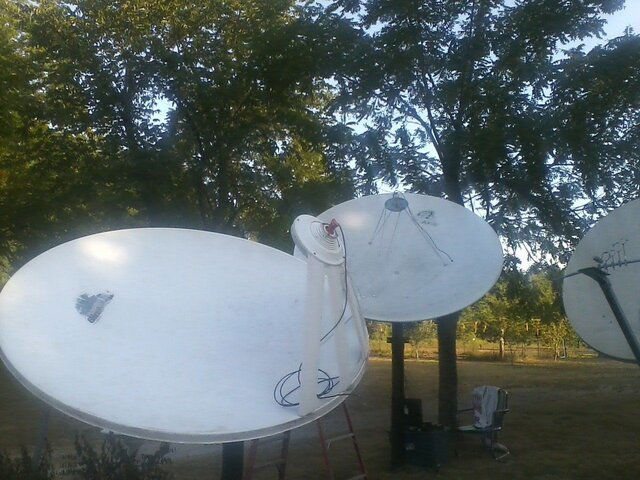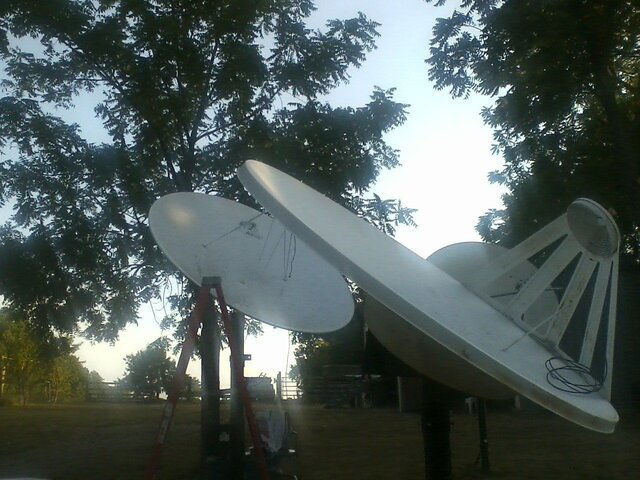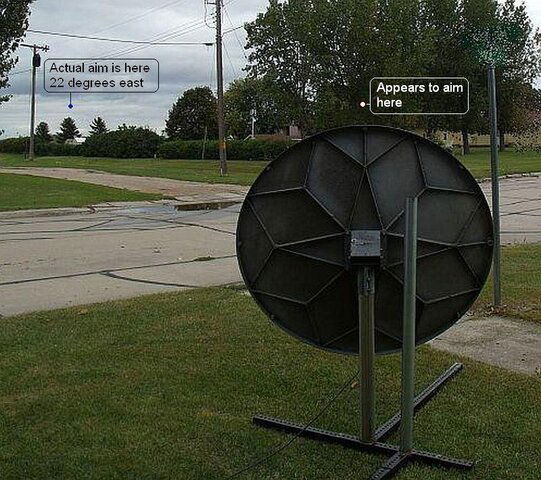Thanks to all of you for your thoughts and suggestions. In my free time yesterday I did what any frustrated SatGuy who has been stumped by an oddball dish would do...moved my outdoor testing equipment about 10 feet and hooked it up to another dish. 
The pic below shows the Spoon pointed at, errr...umm...receiving signals from 93W, and the BV prime focus solid is locked on 58W!
One of the pics is taken from above, looking down on the mount/wedge/reflector, it illustrates how the angles are interacting.
That parabola calculator is pretty cool Mr. Air, I had never seen one that did offset dishes.
I definitely need to determine the offset angle of this beast, it would make sense to me that the angle of the big wedge between the mount and reflector would be equal and opposite to the offset angle of the dish. That should have the dish looking in the same direction that the mount is pointing...but that doesn't seem to be the case.
Here (link) is another pic of a Spoon, notice it is also oriented 180 degrees opposite of mine, and both of the other pics I have found have the logo oriented the same, whereas my logo is 90 degrees off of those 2.
http://www.satelliteguys.us/c-band-...39-birdview-lovers-check-out.html#post2460879
The pic below shows the Spoon pointed at, errr...umm...receiving signals from 93W, and the BV prime focus solid is locked on 58W!
One of the pics is taken from above, looking down on the mount/wedge/reflector, it illustrates how the angles are interacting.
That parabola calculator is pretty cool Mr. Air, I had never seen one that did offset dishes.
I definitely need to determine the offset angle of this beast, it would make sense to me that the angle of the big wedge between the mount and reflector would be equal and opposite to the offset angle of the dish. That should have the dish looking in the same direction that the mount is pointing...but that doesn't seem to be the case.
Here (link) is another pic of a Spoon, notice it is also oriented 180 degrees opposite of mine, and both of the other pics I have found have the logo oriented the same, whereas my logo is 90 degrees off of those 2.
http://www.satelliteguys.us/c-band-...39-birdview-lovers-check-out.html#post2460879






